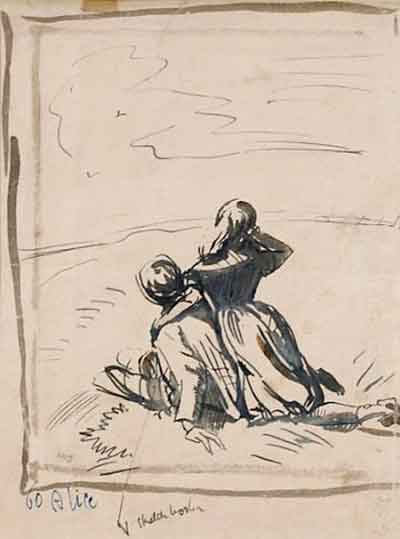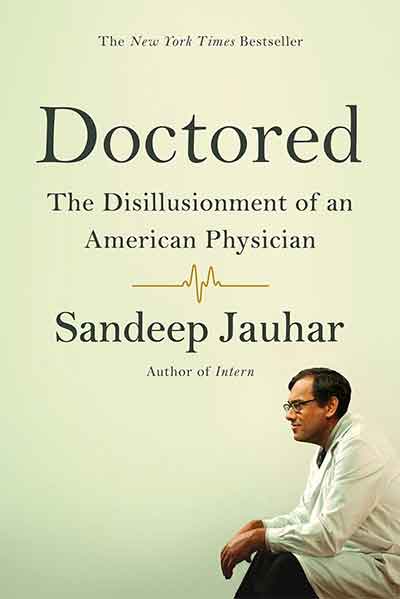
A common concept today about the children portrayed in Victorian literature is that they are innocent in spite of their sufferings and brutalization by the society. One can refer to an apotheosis of childhood innocence through characters like Dickens’s Oliver Twist, Little Nell in Old Curiosity Shop, and Pip in Great Expectations, or Charlotte Brontë’s Jane Eyre. During the Victorian era morality and didacticism were appended to the Romantic imagination, and these childhood victims of social injustice were redeemed by their inherent sense of goodness and modesty. Consequently, later on in life these victims of tyranny did not turn into tyrants themselves.

Emily Brontë’s Wuthering Heights, however, treats children and their sufferings in a very different manner. Peter Coveney observes, “the symbol which had such strength and richness in the poetry of Blake and some parts of the novels of Dickens became in time the static and moribund child-figure of the Victorian imagination” (33). Emily Brontë perhaps captures this idea more acutely than any other of her contemporaries.
When it comes to the novel, most people visualize a grand romance on the Yorkshire moors as portrayed in Hollywood movies by the same name. But I wonder how many actually realize that the heroine of that romance died when she was just over eighteen and Heathcliff had left home three years before that. Doesn’t that make it more of a romance of adolescence or even childhood?
The pain and anguish represented through the two characters is more about the loss of a love that belonged to the freedom of childhood and was lost as they encountered social segregation and class-conflicts as they grew older. In this article, I have chosen to look at those troubled children of Wuthering Heights whose childhood was virtually disrupted by the adult figures surrounding them. The sufferings they encountered as teenagers or adults are rooted in the cherished and tortured existence they led as children.
The popular belief today is that the horrors of the World Wars, concentration camps, and other nightmarish situations took away that world of innocence from the modern child. Such an assumption suggests that nineteenth-century children were more innocent than the children of the twentieth century because they did not experience the horrors of the Great Wars. But standing in mid-nineteenth century England, Brontë shows with brutal honesty that a child’s world might be simpler and less complicated than an adult’s but is still far from being innocent and guiltless.
In ‘Le Chat’, one in the collection of The Belgian Essays, she draws an analogy between a cat and a child. When a child comes to his mother with a crushed butterfly in hands, she hugs him praising his efforts. For Emily Bronte, however, the scenario is reminiscent of a cat “with the tail of a half-devoured rat hanging from its mouth” (58). Using the metaphor of a predator she thus brings forth another aspect of “childhood innocence” which can be cruel and terrifying. And hence, the youngsters in Wuthering Heights torture and kill helpless animals on different occasions. They are reported to kill birds by hanging traps over their nests, and to strangle puppies from the back of chairs.

Early in Wuthering Heights the uninvited guest Mr. Lockwood has a nightmare during his stay at the Heights which in crucial ways sets the tone of the novel. He dreams of someone or something knocking on his windowpane, and when he tries to close the window, a cold little hand grabs his wrist and begs for entrance:
Terror made me cruel; and finding it useless to attempt shaking the creature off, I pulled its wrist on to the broken pane, and rubbed it to and fro till the blood ran down and soaked the bed-clothes: still it wailed, “Let me in!” and maintained its tenacious gripe, almost maddening me with fear. (20–21)
The dream, or rather the nightmare is fearful in its realistic description and neither the author nor the narrator attempts to interpret it except in incoherent blabbering. His fear makes him act irrationally and thus the readers are made to enter a world where children are treated unkindly, cruelly even.
While cruelty toward children is not all that unusual in Victorian novels, the problem with Wuthering Heights is that here it seems rampant. The houses in Emily’s novel are not work-houses or orphanages as one can find in the novels of Dickens. And yet the way children are reared and treated here can hardly be described as benevolent or nourishing.
The idea that children are to be treated kindly, a theme repeatedly emphasized by the Victorians, seems to have gone completely awry in Wuthering Heights. Children are mostly treated whimsically by adults as if they are mere playthings. Moreover, because the purveyor of ill-treatment is a parent or guardian, there is nobody to interfere, nobody to question the authority of the wrongdoer.
Old Earnshaw takes a fancy to the foundling Heathcliff but turns against his own son, Hindley. So much so, that in order to have peace in the house after his wife’s death he sends Hindley away to college. Not once does he consider the way he as a father has allowed an outsider to usurp his son’s rightful place. On the contrary, he blames Hindley for unruly behavior. Naturally, when Hindley returns home after his father’s death, he has no compassion for his usurper of a foster brother, Heathcliff.
Then we have old Mr. and Mrs. Linton, generally known as kind and just people. And yet during Catherine and Heathcliff’s nocturnal adventure at the Grange, they are unperturbed by Catherine being bitten by their watchdog, Skulker. It is only later when Edgar identifies her as Miss Earnshaw, they tend to her wound. Mr. Linton allows young Cathy to be welcomed inside, but Heathcliff is turned out because he does not conform to the behavior or appearance of an ideal child as Mr. Linton observes:
“Oh, my dear Mary, look here! Don’t be afraid, it is but a boy—yet, the villain scowls so plainly in his face, would it not be a kindness to the country to hang him at once, before he shows his nature in acts, as well as features?” (39)
Instead of the angelic golden looks of Oliver Twist, or Edgar Linton, Heathcliff possesses the dark appearance of a gypsy; he swears, and often speaks gibberish instead of clear English. To be welcomed as a cherished child, however, one would have to appear and act as a perfect child, and not just have the size and looks of any child. He is younger than Edgar, is still in his adolescence, yet the Magistrate of the province wants him hanged—Linton’s real feelings here survive his irony—based on his gipsy-like looks.
Oliver with his innocent appearance earns occasional compassion even from the master criminal Fagin, but Heathcliff with his dark countenance fails to gain an iota of sympathy from either Mr. or Mrs. Linton. They never attempt to understand Heathcliff’s plight or Hindley’s tyranny. On the contrary, they also seem to feel that the “little Lascar” deserves that kind of treatment because of his unbecoming appearance and unruly behavior. Such an attitude toward children indicates a problematic aspect about Victorian England. Often characters were decided based on physiognomy, just as Mr. Linton assumes Heathcliff to be a criminal.
Nelly, who presents herself to be better than most in her appreciation of Heathcliff, admits that Hindley’s treatment of Heathcliff “was enough to make a fiend of a saint” (51). And yet she too often confides in her audience that Heathcliff might very well have been a devil’s child, as she says, “where did he come from, the little dark thing, harbored by a good man to his bane?” (252). Such concerns against Heathcliff are uttered by almost all characters of the novel on different occasions, throwing light on a very provincial attitude of contemporary England. Even children could not escape the clutches of such convictions, and therefore, were treated accordingly. The problem with Heathcliff is not just that he is a foundling, but also that he is a foundling with non-English physical attributes. Moreover, he often resists social decorum and takes a perverse joy in acting wicked. It matters little, therefore, that he is a child; more important is the fact that he does not fit the criteria set for an adorable child.
Thus, it obviously seems that in spite of promoting innocent childhood, nineteenth-century England could very well have been a challenging sphere for children. Religious beliefs encouraged strict discipline but there was nobody to oversee the tyranny practiced in the name of religious teaching. So, while young Heathcliff and Catherine are bullied into reading the Bible by Joseph in a cold fireless room, Hindley and his wife enjoy themselves in idleness, resting by the fire.
Furthermore, Emily Brontë questions the traditional understanding of a good child and a bad one. Heathcliff tells Nelly that the reason behind his and Catherine’s nocturnal visit to the Grange was to find out if the Linton children are treated as badly as they are. When Nelly sinks into the purely conventional again [and], says that they are good children and therefore do not need punishment, Heathcliff scoffs at her for being partial to the Linton children because she thinks it is acceptable: “‘Don’t you can’t, Nelly,’ he said. ‘Nonsense!’” (38). Soon and often it becomes apparent that there is nothing so extraordinarily good about Edgar and Isabella. They are the children of a local, influential man, and therefore, petted by everybody around them. They are taught to be polite in company and dress well. In spirit, however, they are no better than the children of Wuthering Heights.
Another interesting aspect about the children of this novel is that they are all are left without the care and protection of their mother. Not a single one of them approach adulthood with their mother to protect them.
It indeed seems that Emily Brontë’s world is a place where children are left without the protection of their guardians, and “normal” emotions are reverted (144). In some significant ways, they pose as a commentary on the children of Charles Dickens who are idolized as perfect children. This is how even some of Brontë’s contemporaries looked at her work, and failed to understand the meaning of such random atrocities. The Victorian mind probably expected a kind of pattern of stable life which Emily’s novel refuses to provide.
Sohana Manzoor is an Associate Professor of English at the University of Liberal Arts Bangladesh.
Originally published in Borderless Journal
SIGN UP FOR COUNTERCURRENTS DAILY NEWSLETTER
















































